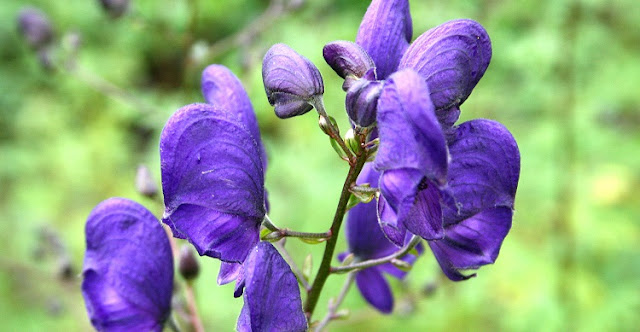 |
| Aconitum napellus - Monkshood |
Native to western and central Europe, Aconitum napellus is noted for its deeply cut foliage and intensely blue flowers. Under favourable condition you can expect it to grow to 1-1.5 metre tall and with an approximate spread of 0.1-0.5 metres. The dark-green, palmate leaves are rounded, between 5–10 cm diameter and five to seven deeply lobed segments. The blooms are dark purple to bluish-purple in colour, and are produced in July and August. Each narrow, oblong, helmet-shaped flower is approximately 1–2 cm long.
Plant Aconitum napellus between October and March in a moist, deep soil. They will perform best in partial shade but will tolerate full sun if soil conditions remain moist throughout the growing season. After their second year, mulch annually in the spring.
Aconitum napellus can be cut back after flowering to encourage bushier growth. Cut down the flowering stems of all specimens in October.
The Aconitum napellus cultivar 'Spark's Variety' has gained the Royal Horticultural Society's Award of Garden Merit in 1993.
Warning. Always wear gloves when handling as the aconitine toxin is absorbed easily through the skin.
Image credit - Jean-Pol GRANDMONT licensed under the Creative Commons Attribution-Share Alike 3.0 Unported license.
For related articles click onto the following links:







No comments:
Post a Comment